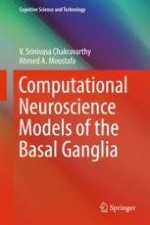2018 | OriginalPaper | Buchkapitel
10. A Cortico-Basal Ganglia Model to Understand the Neural Dynamics of Targeted Reaching in Normal and Parkinson’s Conditions
verfasst von : Vignesh Muralidharan, Alekhya Mandali, Pragathi Priyadharsini Balasubramani, Hima Mehta, V. Srinivasa Chakravarthy, Marjan Jahanshahi
Erschienen in: Computational Neuroscience Models of the Basal Ganglia
Verlag: Springer Singapore
Aktivieren Sie unsere intelligente Suche, um passende Fachinhalte oder Patente zu finden.
Wählen Sie Textabschnitte aus um mit Künstlicher Intelligenz passenden Patente zu finden. powered by
Markieren Sie Textabschnitte, um KI-gestützt weitere passende Inhalte zu finden. powered by
